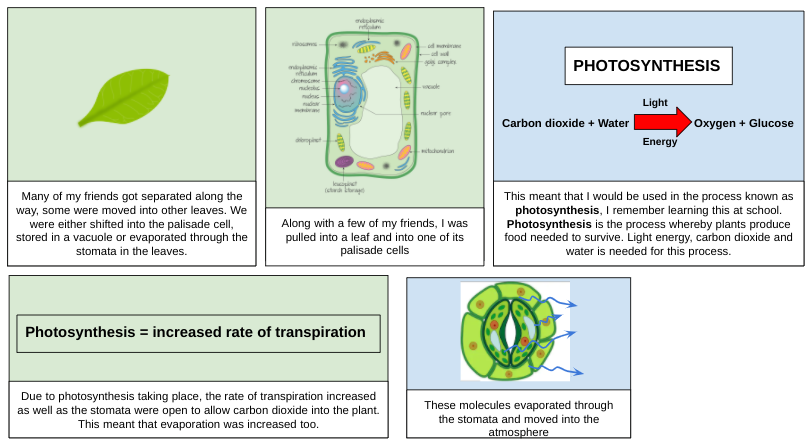An Interdisciplinary Approach: Creative Scientific Writing
An Interdisciplinary Approach
An area of learning that is really important at Landmark is ensuring that the tasks we set are valid and will support a student’s growth beyond the classroom. A method that is used to support validity is developing tasks that are interdisciplinary in nature. Most jobs and activities that students go on to pursue will involve utilising skills and concepts from more than one discipline to create a product or make a decision.
A recent example was a task called ‘Creative Scientific Writing: A water molecule’s journey through a plant’. In this task year 10 students utilised their understanding of writing for a purpose and for an audience. The task was developed for students to write a short story or cartoon to educate primary age students about the journey of water through a plant. Students created the story or cartoon from the perspective of the water molecule and included scientifically accurate information. To do this the students had to incorporate their biological knowledge of osmosis and transpiration, whilst considering audience and purpose: an integral element of the English course.
The task supported students in creating a valid piece of work and developed the transferable skill of communicating scientific concepts to non-scientists. The importance of this skill has recently become very evident as it is has been a major part of the response to the pandemic, as seen through public health literature. Now our students have had the opportunity to create their own piece of scientific literature which has been targeted at a younger audience. Below are some samples from their pieces.
Samples from the students’ creative scientific writing
A section of a secondary school student's cartoon about a water molecules journey through the plant
“We keep on following the lower concentration of water molecules in front of us through the roots, and then we enter the xylem.”
“My other friend, H2O #341, was evaporated and came out of the stomata. I never saw him again after that. He was climbing up into the sky and he became a cloud.”
A student utilised the style of a comic to express the scientific concepts
“ I am not chosen to make the food but have another important job to do. I must evaporate from the leaf. I am taking energy away from the plant to cool the plant down. Life as a water molecule continues.”


